al o Appro T d v a By Maurice Summers NAVIGATING VEHICLE PURCHASES WITH CHALLENGING CREDIT

© Maurice Summers, 2024 All rights reserved. No part of this publication may be reproduced, distributed, or transmitted in any form or by any means, including photocopying, recording, or other electronic or mechanical methods, without the prior written permission of the publisher, except for brief quotations embodied in critical reviews and specific other noncommercial uses permitted by copyright law. ISBN: 9781304412676 Published by Maurice Summers For permission requests, write to the publisher, addressed “Attention: Permissions Coordinator.” Book Layout ©2024 Maurice Summers Cover Design: Maurice Summers
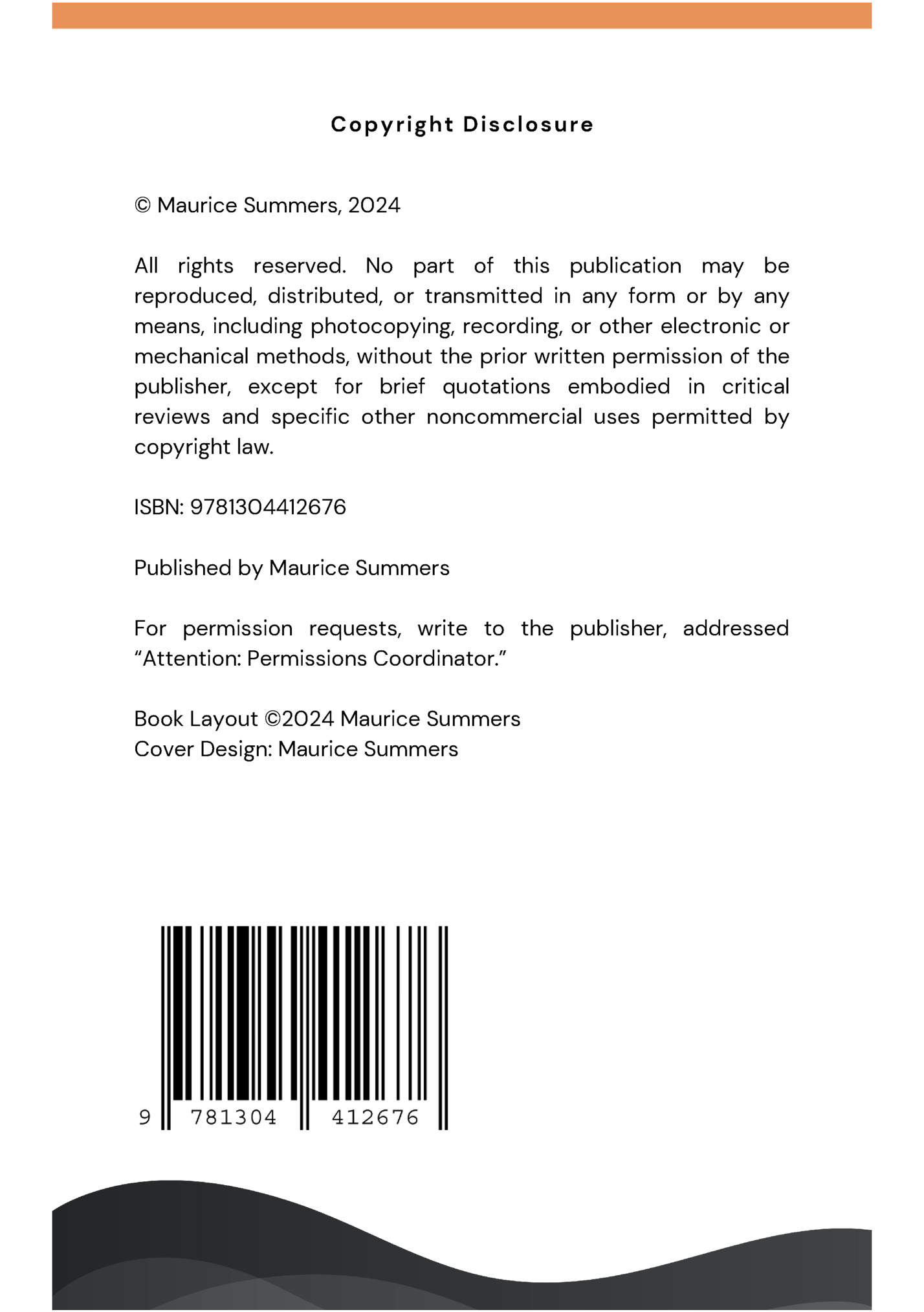
1. Building your budget: Financial freedom on the road 2. Navigating credit hurdles: Tools and strategies for car financing 3. Laying the groundwork: Preparing for your journey to vehicle ownership with challenging credit 4. Researching like a pro: Unveiling your ideal car 5. Finding Your Perfect Match: Buying a Pre-Owned Vehicle 6. Navigating the waters of car financing: Strategies for Successful Loan Acquisition 7. Ditch the loan, drive the dream: Unleash the power of leasing 8. Car price talks: Optimal pricing tactics 9. Ensuring a smooth ride: Essential maintenance for your car 10. Driving away smart: Finalizing your purchase and finding your perfect match
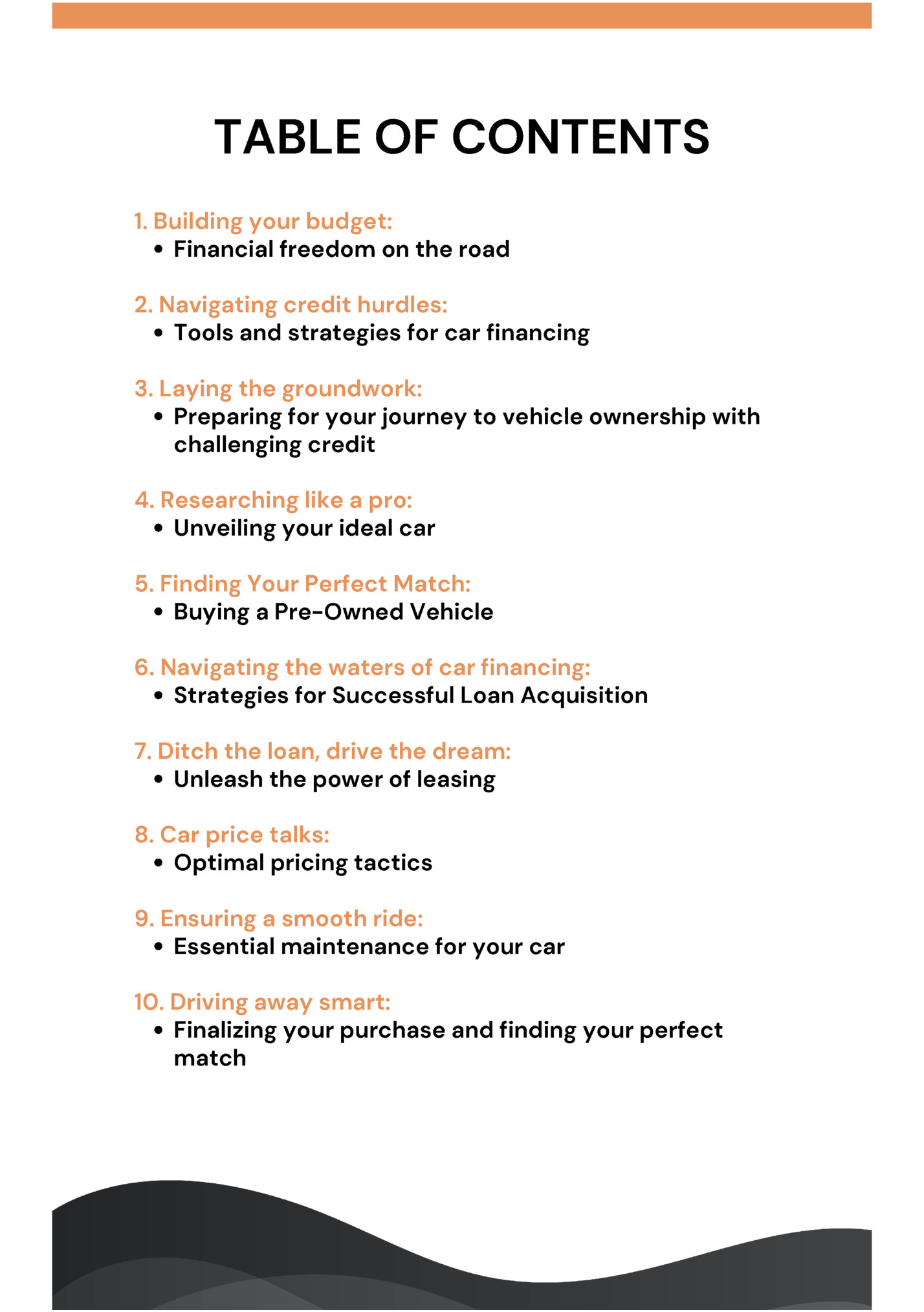
A Guide to Buying a Vehicle with Challenging Credit I'm Maurice Summers, a seasoned automotive professional with over a decade of experience in dealership sales. In this guide, I'll share practical strategies and insights to help you overcome obstacles in purchasing a vehicle, especially if you need better credit or limited down payment options. Together, we'll navigate the complexities of the carbuying process, empowering you to negotiate favorable terms and find the perfect car within your budget. Let's rev up our engines and embark on this road to approval together. By the end, you'll confidently drive away in the car of your dreams. Let's get started!

Financial Freedom on the Road Congratulations on taking the first step towards car ownership! But before you zoom off into the sunset (or, more realistically, the grocery store parking lot), it's crucial to establish a healthy budget for your new ride. Think of it like building a roadmap—it ensures you reach your destination (car ownership) without getting stranded financially. This chapter equips you with the tools to navigate the exciting yet sometimes overwhelming world of car budgeting. Here's what we'll cover:
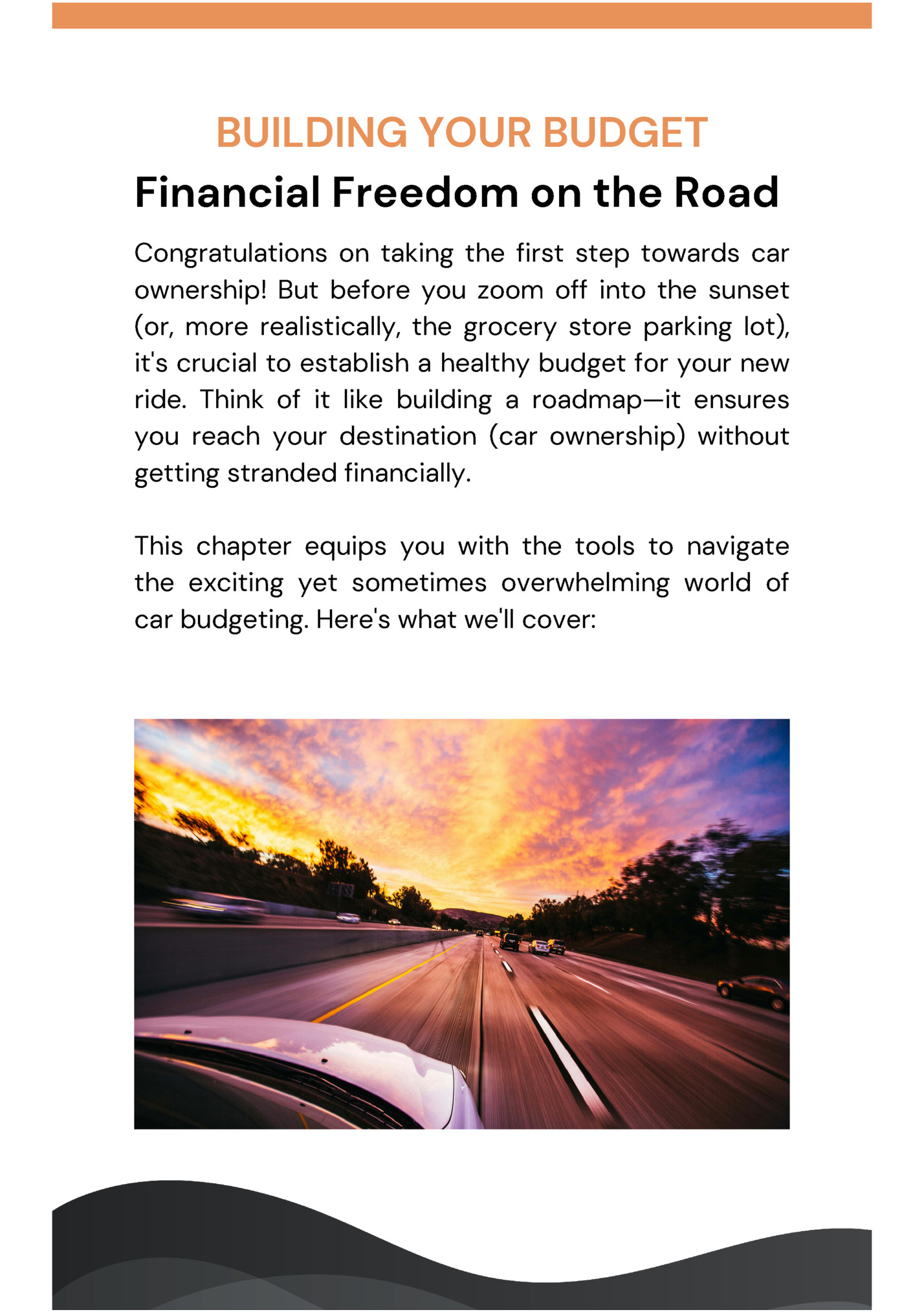
The Speedometer of Affordability Just like a car has a speedometer to prevent reckless driving, you need a gauge for your budget. Here's how to find yours: Monthly Take-Home Pay: Your journey begins here. First, consider your consistent income, which you regularly earn. This should be calculated after subtracting taxes and mandatory deductions like social security, health insurance, and retirement contributions. This net income, often called ‘take-home pay,’ is the amount you have available for spending and saving. Understanding this figure is crucial as it forms the foundation of your budget and financial planning. Existing Debt: Remember ongoing financial obligations like rent, student loans, or credit card payments. Factor these in to determine how much wiggle room you have left for a car payment.
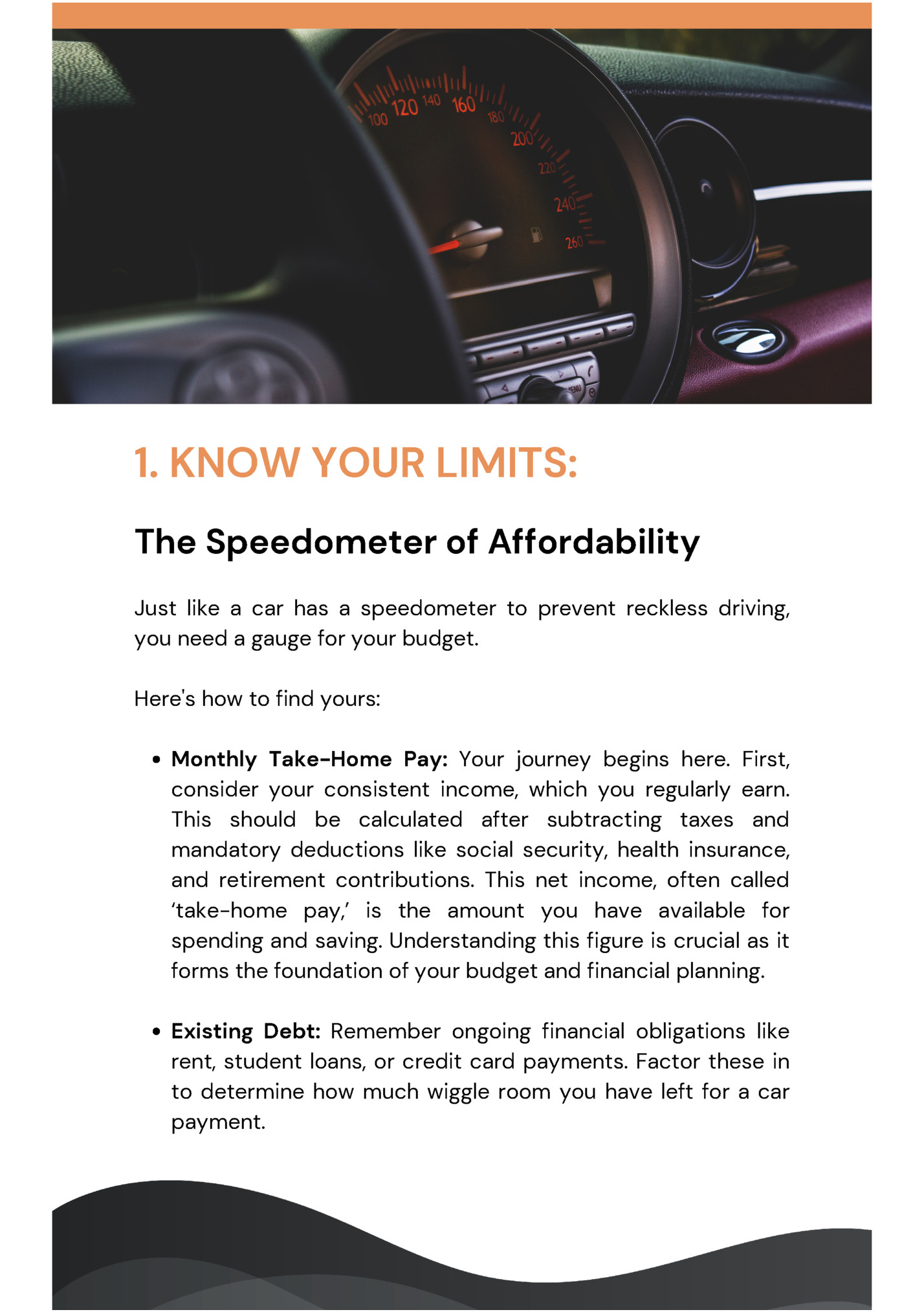
Three-Point Turn for Budgeting 20% Down Payment: This suggests that you should aim to make a down payment of at least 20% of the car’s total price. This is beneficial as it reduces the amount you need to borrow, leading to lower monthly payments and less interest paid over the life of the loan. For example, if a car costs $20,000, a 20% down payment would be $4,000. 4-Year Loan: The rule recommends that your car loan not extend beyond four years. A shorter loan term means you’ll pay off the car faster and spend less on interest. It also reduces the risk of being “upside down” on your loan when you owe more on the car than it’s worth. 10% Monthly Income: This rule advises that your monthly car expenses should not exceed 10% of your gross monthly income. These expenses include your car loan payment and other costs such as insurance, gas, and maintenance. Keeping these costs to 10% of your income ensures that owning a car doesn’t become a financial burden and leaves room in your budget for other expenses.
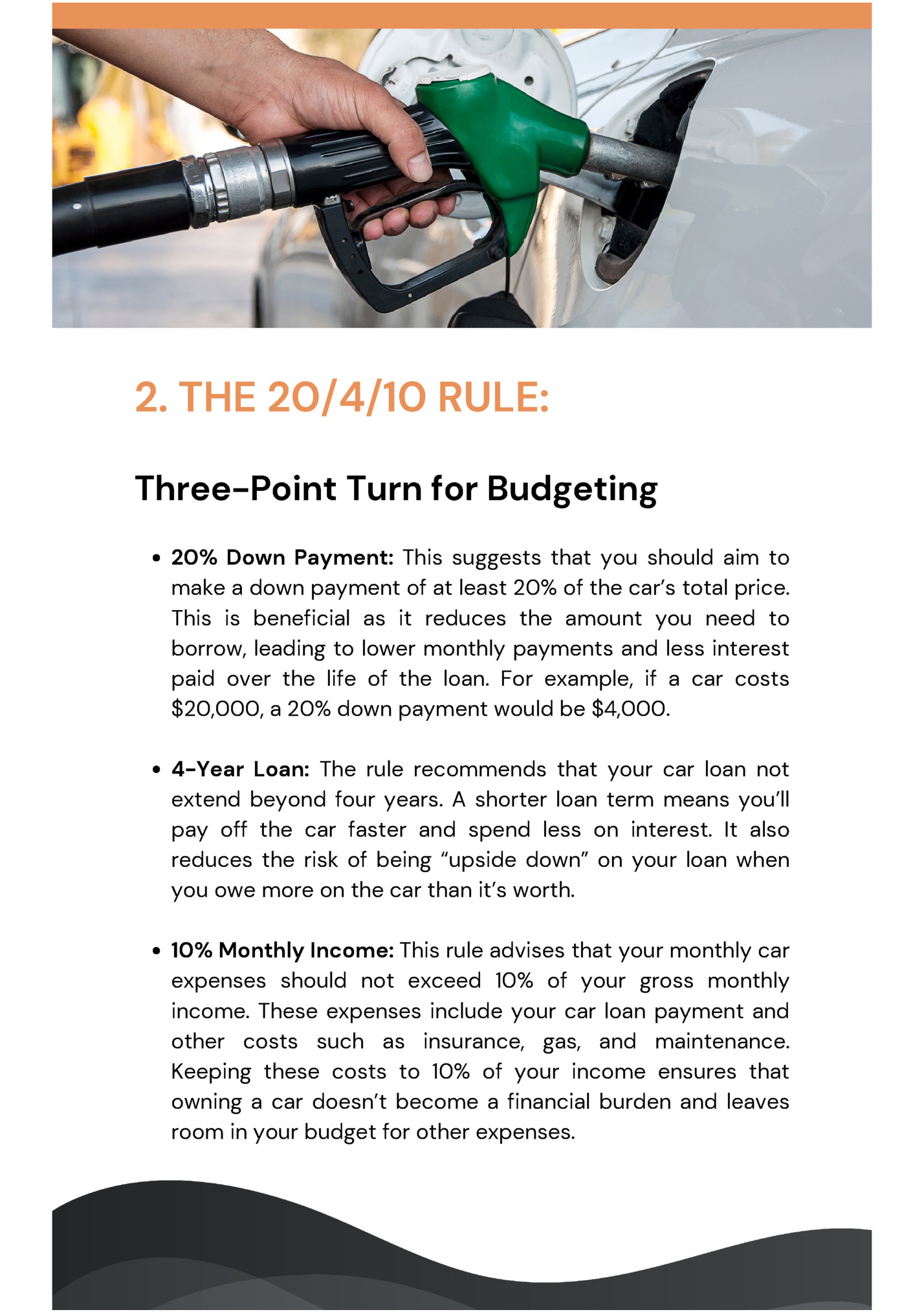
Fueling Your Financial Freedom The 20/4/10 rule is a great starting point, but here are some additional tips for a truly healthy car budget: Embrace the Spreadsheet: Create a budget spreadsheet to track your income and expenses. This helps you visualize your spending habits and identify areas for potential adjustments. Factor in Future Costs: Consider potential maintenance needs and unexpected repairs when setting your budget. Setting aside a small emergency car fund can be a lifesaver. Lifestyle Considerations: Be realistic about your car usage. Do you need a gas guzzler if your daily commute is short? When choosing a car, consider fuel efficiency and overall running costs. Remember: Your car should enhance your life, not drain your wallet. By establishing a clear budget, you'll cruise towards car ownership with financial freedom as your co-pilot!
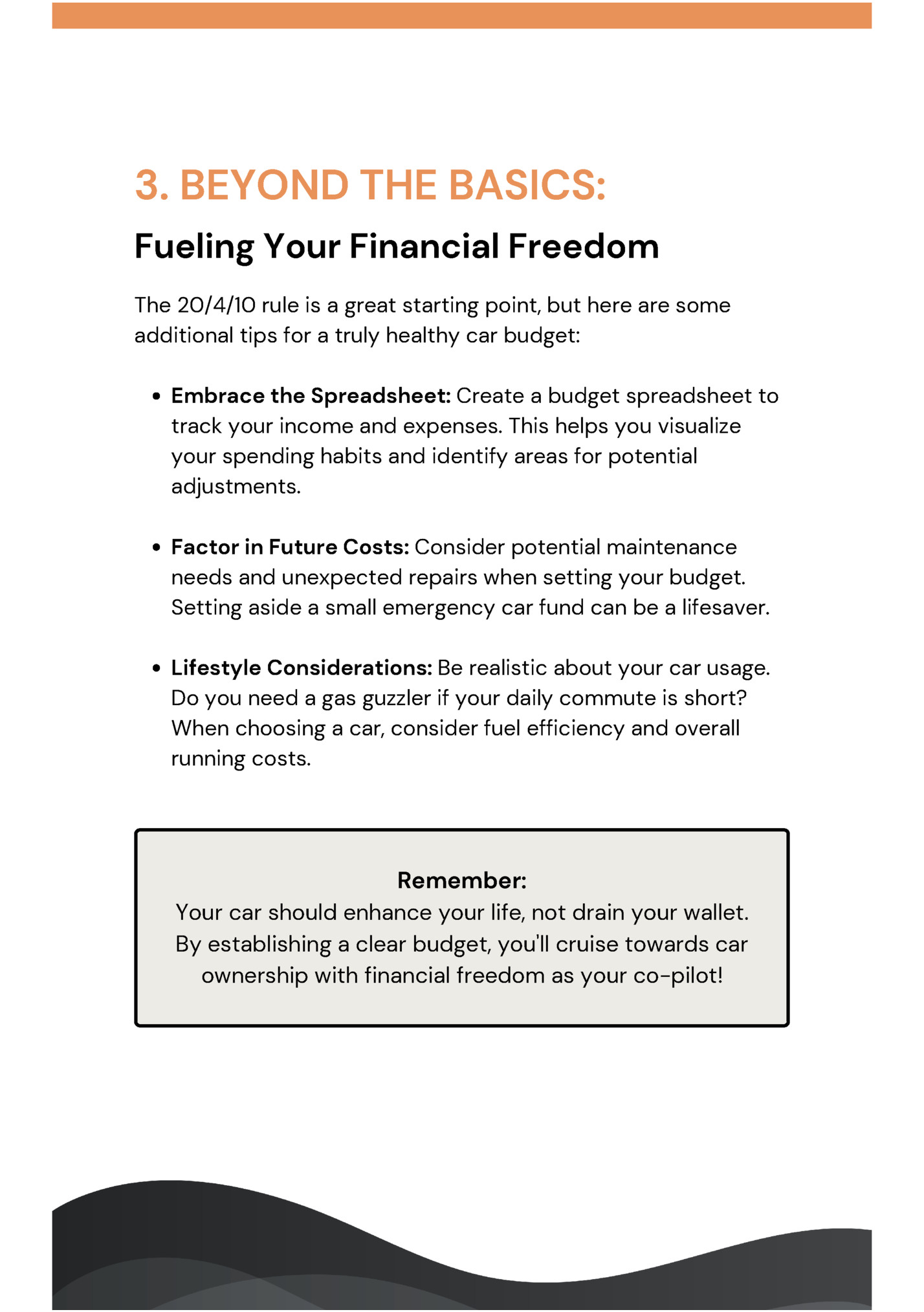
Tools and Strategies for Car Financing Credit Counseling Services Entities like the National Foundation for Credit Counseling (NFCC) provide a lifeline through free and confidential debt relief solutions. These include credit counseling, debt management, debt settlement, and bankruptcy. The Consumer Financial Protection Bureau also offers a handy guide on credit counseling services. Automobile Marketplaces and Valuation Tools Platforms like Kelley Blue Book (KBB), National Automobile Dealers Association (NADA), Edmunds, TrueCar, and AutoTrader are treasure troves of services. They help determine car values, offer shopping advice, provide car reviews, facilitate comparisons, and list new and used cars for sale.
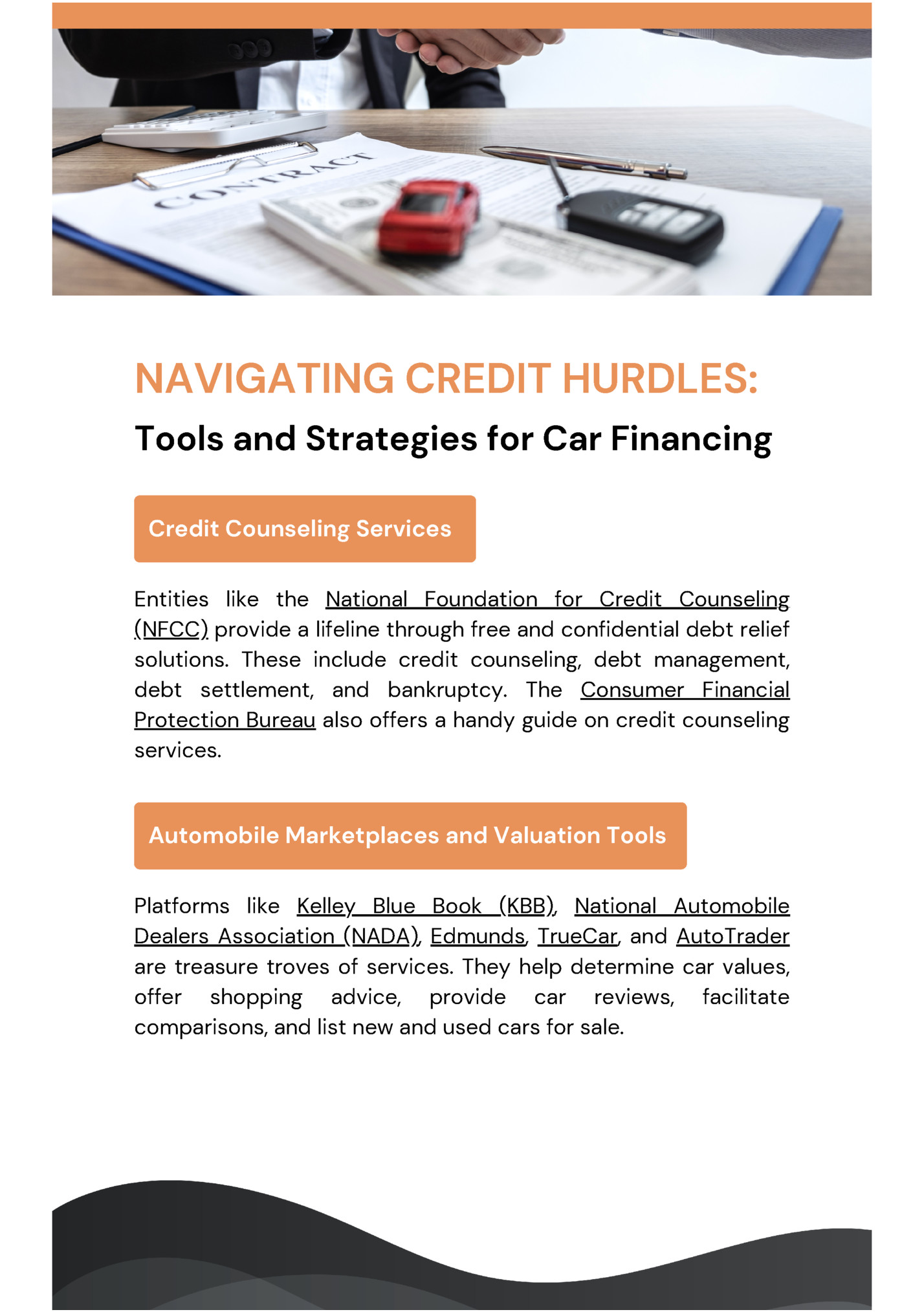
Fleepit Digital © 2021